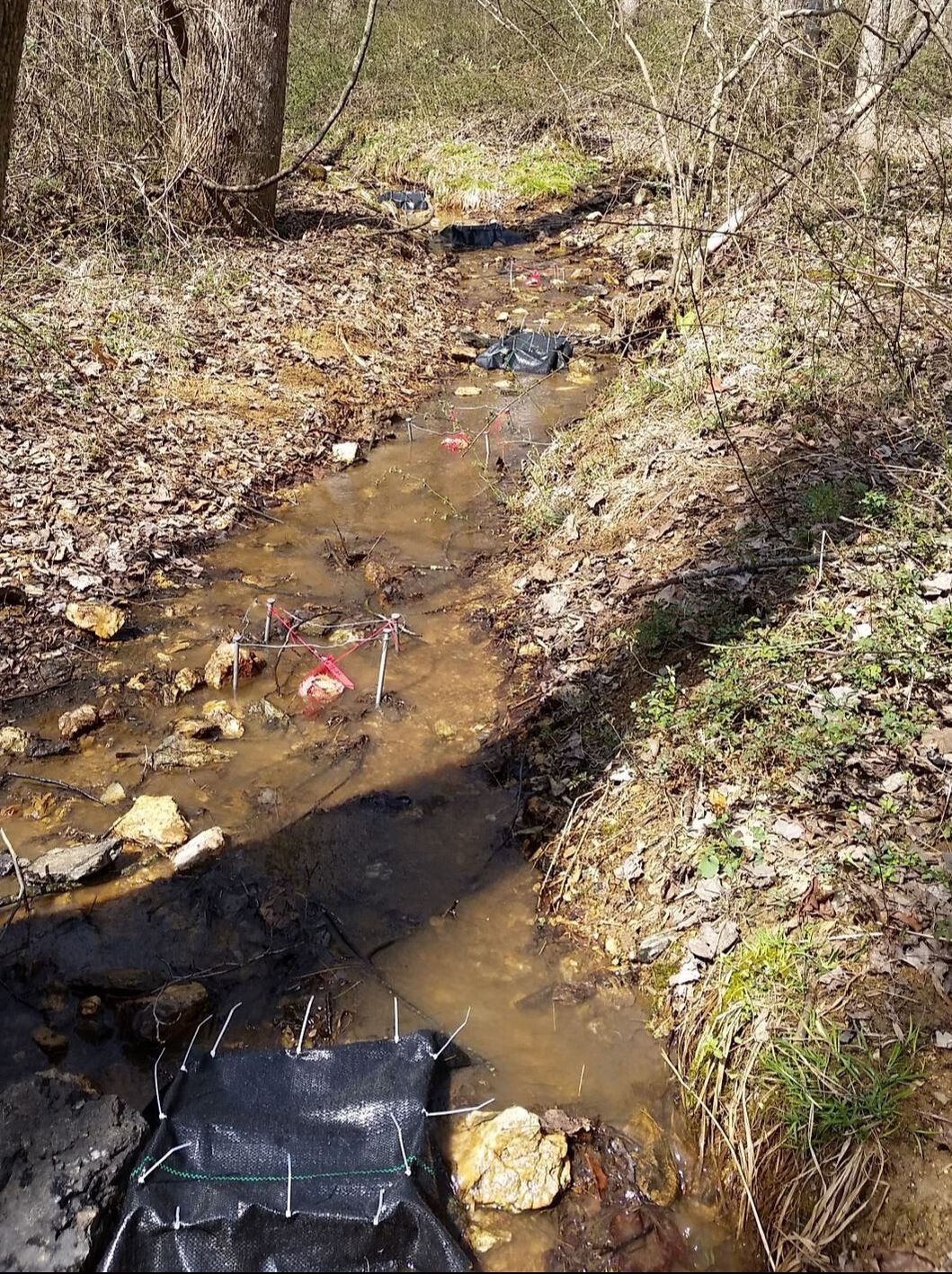Leaf-associated periphyton and macroinvertebrates in heterotrophic streams
|
Temperate headwater streams are often shaded, limiting algal production, and have therefore been considered energetically supported by organic matter decomposition, such as leaf decomposition. Leaves are colonized by fungal and bacterial decomposers, and this leaf-microbe matrix is fed upon by macroinvertebrate shredders. Although algal biomass on leaves in these streams is often low due to light limitation, recent work has indicated algae interact with the microbial decomposers to affect decomposition rates (e.g., Danger et al., 2013; Kuehn et al., 2014; Halvorson et al., 2019) and that algae associated with leaves provide a more nutritious food resource for macroinvertebrates (e.g., Brett & Müller-Navarra, 1997; Guo et al., 2016). Research investigating the role of algae in shaded headwater streams has centered primarily on algal-fungal relationships and the algal impact on decomposition rates, while the limited research regarding growth and preference of macroinvertebrates on leaves with different amounts of algae have produced mixed conclusions. Given these research gaps and mixed conclusions, we have been investigating the role of leaf-associated algae for macroinvertebrate assemblages associated with leaves and in macroinvertebrate growth and food preference.
|
|
To investigate macroinvertebrate assemblages, we conducted a field experiment that manipulated light (ambient, shaded) in streams of high and low nutrient concentrations in winter and spring on red maple leaf packs. Light and nutrient levels affected algal biomass, with greatest biomass in ambient light treatments and high nutrient streams. Algae and fungi both impacted leaf stoichiometry, with C:N ratios more strongly related to algae in winter and to fungi in spring and N:P and C:P ratios more strongly related to fungi in winter and algae in spring. These leaf factors affected macroinvertebrate assemblages within the leaves. Functional feeding guilds responded to different leaf factors, and these responses also varied by season and whether biomass or abundance was considered. For instance, in the winter, shredder abundance was related to algal and fungal biomass as well as leaf C:N while in spring, shredder biomass was related to leaf C:P. In the winter, predator biomass was related to fungal biomass while it was related to algal biomass in the spring, suggesting leaf characteristics can impact higher order organisms as well. Additionally, certain taxa exhibited relationships with our factors and algal biomass. For example, ephemerellid mayflies were more abundant and had greater biomass where algal biomass was greater. In contrast, tipulid crane flies were more abundant with lower algal biomass. To assess growth, we used a lab experiment providing red maple leaves conditioned in the dark or the light for four weeks to Ephemerella invaria (Ephemeroptera: Ephemerellidae; a collector-gatherer) and Caecidotea communis (Isopoda: Asellidae; a shredder). Both species consumed both algal and leaf material. C. communis grew more on light-conditioned leaves, while there were no growth differences in E. invaria. Stable isotope analysis indicated E. invaria assimilated both algal and leaf material while C. communis was assimilating an unknown carbon source perhaps singly or in combination with algal biomass (closest carbon signal). Preference for light or dark conditioned leaves was examined for four shredders (Caecidotea communis; Tipula sp., Diptera: Tipulidae; Lepidostoma sp., Trichoptera: Lepidostomatidae; Amphinemura sp., Plecoptera: Nemouridae) and one scraper (Stenonema sp., Ephemeroptera: Heptageniidae). Consumption did not vary between light and dark conditioned leaves for any organism, but Tipula sp. consistently consumed greater dark-conditioned leaves than lightconditioned leaves. Results from these experiments indicate that algae can influence headwater stream macroinvertebrates, some positively and some negatively, which impacts their growth and colonization.
|
In publications, see Eckert, et al. 2020.




